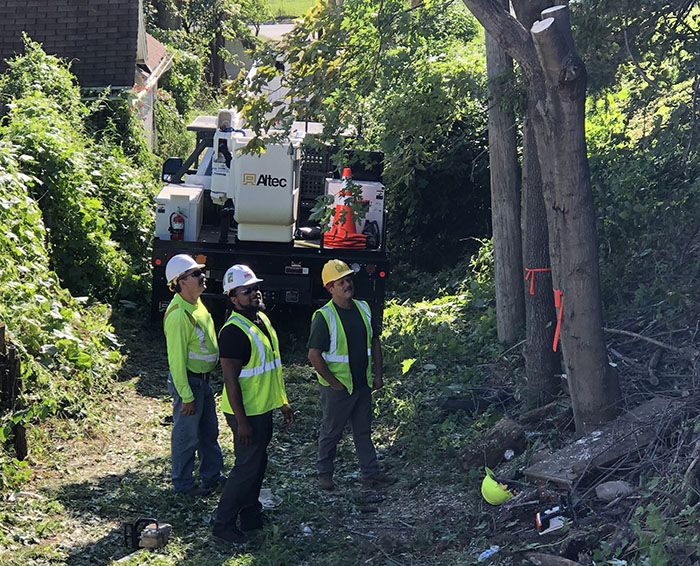OPPD board approves modest rate increase for 2022

The Omaha Public Power District Board of Directors approved a $1.8 billion Corporate Operating Plan (COP) for 2022 on Thursday. The plan includes an average 2.5% increase in retail rates across all customer classes as the utility works to improve and modernize our power distribution system.
OPPD had held rates steady for the past five years through ongoing lean business practices, despite continually rising costs of materials, goods and labor.
While the utility continues to trim budgets in areas that will not impact reliability or resiliency of the electric system, OPPD must continue to invest in improving customer experience and positioning itself for the future. A number of focus areas comprise the 2022 COP and the additional $26 million needed to fund it.
“We must make investments in our system—for the health of our existing structures and equipment, to upgrade our technology and enhance our customers’ experience through improved communication and outage information, and to build infrastructure that supports our growing communities,” said OPPD President and CEO Javier Fernandez.
Impact to customers
Under state law, the Board must set rates based on the cost of service for each customer class. Effective Jan. 1, residential customers will see a rate increase of about 3.2%, when averaged throughout the year. The overall bill impact for the average residential customer, using approximately 1,000 kilowatt-hours per month, equates to $35.60 more over the course of a year. It will be noticed more in the summer months, when customers typically use more energy, than the non-summer months.
The increase for industrial customers is 3.2%. It’s 0.9% for commercial customers, and 2.5% for lighting customers, such as municipalities and sanitary improvement districts.
The COP does not require a change to the Fuel and Purchased Power Adjustment (FPPA), which appears as a separate line item on customers’ bills to recover costs the utility cannot control, such as fluctuating market prices for fuel.
“The utility industry is going through a period of rapid transformation,” said Fernandez. “As we navigate these changes, our employees are working on a number of innovative projects and initiatives to position better position OPPD for the future.”
Driving factors behind increase
OPPD recommended a rate increase based on several external factors, including the increasing cost of infrastructure, as well as investment in new technology resources for customers and initiatives that will transform OPPD as it moves into the future.
A few examples of the ways the additional revenue from these rate adjustments will be used:
- Implement technology that will increasingly integrate our system and modernize our technology platform to better serve our customers.
- Increase the reliability of the system through greater investment in the maintenance of overhead lines.
- Hiring new team members in Energy Delivery to keep up with large infrastructure projects.
System improvements
As a public power utility, OPPD puts all revenue generated by retail sales directly back into the operations of the utility.
Doing so allows OPPD to leverage any such revenue increases directly into improving the system and doing the necessary work to help the utility be one that is ready to face current as well as emerging challenges. And as a public power utility operating as a not-for-profit organization, OPPD works hard to be responsible with its management of the system and its assets while maintaining fair and reasonable rates.
Customer benefits
One immediately visible way customers will see this additional revenue at work is through the increased budget for tree trimming. Tree interference with power lines and equipment is typically one of the largest causes of power outages. The utility has been steadily increasing the tree trimming budget to help prevent service disruptions. In 2022, $14.28 million is budgeted for tree trimming, which is the highest amount ever. This is nearly double the budget for tree trimming five years ago.
As our region grows, the utility must also invest in needed transmission upgrades and additions to ensure power reliability and resiliency. Since OPPD’s last rate adjustment, energy-related costs have increased while demand-related costs have decreased. OPPD’s load factor is higher and there is a need to add generation assets to ensure system reliability and resiliency.
OPPD customer needs are also evolving, requiring new and innovative offerings from the utility. To achieve this, OPPD is investing in a multi-year “intelligent energy ecosystem” to increase reliability and coordinate data collection to better meet customers’ needs.
The utility is also working to improve customer outage notification through measures like advanced metering infrastructure (AMI), so OPPD knows which customers are without power without relying on customers to report the issue. Another benefit OPPD is pursuing is two-way customer communication so that customers are aware of changes in usage patterns so that they know in real-time how their consumption is affecting their monthly bill.
“We are committed to doing this important work, while maintaining a strong focus on our mission of providing affordable, reliable and environmentally sensitive energy services for our customers,” said Fernandez.

Jason Kuiper joined OPPD as a communications specialist in 2015. He is a former staff writer and reporter at the Omaha World-Herald, where he covered a wide range of topics but spent the majority of his career covering crime. He is a graduate of the University of Nebraska at Omaha and has also appeared in several true crime documentary shows. In his free time he enjoys cooking, spending time with his wife and three children, and reading crime novels.
View all posts by Jason Kuiper >







